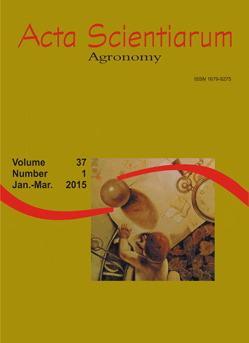<b>Interaction of <i>Saccharomyces cerevisiae</i> and <i>Lactococcus lactis</i> in the fermentation and quality of artisanal cachaça
Resumo
Lactococcus lactis and Saccharomyces cerevisiae in co-culture were evaluated during sugar cane fermentantion for cachaça production. The inocula containing L. lactis UFLA CA 312 and S. cerevisiae UFLA CA 11 were used in the population of approximately 105 CFU mL-1 and 108 CFU mL-1, respectively. The sugar cane medium plus 1% of yeast extract (SCM) was efficient for growth of L. lactis UFLA CA 312 and S. cerevisiae UFLA CA 11 (letter ‘b’-Tukey test). In flasks and vats fermentation the growth of UFLA CA 11 was not negatively influenced by L. lactis UFLA CA 312. However, after 19 hours of fermentation, bacterial population showed a slight decrease. Considering parameters higher alcohols and aldehydes, cachaça produced by pure culture of S. cerevisiae was similar to cachaça produced by mixed culture. Cachaça produced by mixed culture showed high values of volatile acidity (letter ‘b’-Tukey test) being characterized by this parameters in the principal component analysis. High percentage of acceptance (81.10%) for the attribute aroma was observed in samples from cachaça produced by mixed culture.
Downloads
DECLARAÇÃO DE ORIGINALIDADE E DIREITOS AUTORAIS
Declaro que o presente artigo é original, não tendo sido submetido à publicação em qualquer outro periódico nacional ou internacional, quer seja em parte ou em sua totalidade.
Os direitos autorais pertencem exclusivamente aos autores. Os direitos de licenciamento utilizados pelo periódico é a licença Creative Commons Attribution 4.0 (CC BY 4.0): são permitidos o compartilhamento (cópia e distribuição do material em qualqer meio ou formato) e adaptação (remix, transformação e criação de material a partir do conteúdo assim licenciado para quaisquer fins, inclusive comerciais.
Recomenda-se a leitura desse link para maiores informações sobre o tema: fornecimento de créditos e referências de forma correta, entre outros detalhes cruciais para uso adequado do material licenciado.




















































